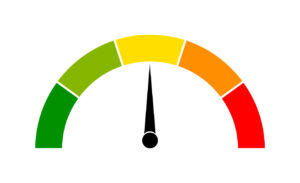Curating the week in wellness May 3–7, 2021: Supporting working moms, digitizing employee engagement, and more
The week’s essential content and fresh industry pickings for those dedicated to employee well-being.

Good morning, wellness pros!
We hope you enjoy this batch of enriching content and thought-provoking articles.
As always, please get in touch with any ideas, suggestions or feedback on how we can serve you better. We are grateful for your partnership and for all the excellent work you do.
1. How well are you supporting working moms?
The pandemic has been a nightmare for most of us. It’s been especially difficult for women—nearly 3 million of whom have dropped out of the workforce since last year. Working moms have faced even more challenges.
As we approach Mother’s Day weekend, how well would you say your company has supported the moms in your midst?
Human Resource Executive offers ideas on how to help, including:
- “We’ve got to encourage employers to provide new roles, flexibility, reskilling and opportunities for advancement for women.”
- Many moms remain bullish on flexible, hybrid work, citing one to two days in the office as their most desirable work schedule.
- “I feel alone and unable to connect with co-workers on the extra stressors I’m dealing with at this time surrounding childcare availability and just fears in general,” reports one surveyed mom.
- Compared to working fathers, mothers also rate their managers’ concerns for their well-being 10% less favorably, their social connectedness at work 21% more negatively and their workload 31% less manageable.
- Many moms feel underappreciated at work, for example, rating the competitiveness of their salary for their role as 25% worse than dads surveyed, while they view the degree to which they are paid what they are worth to their organization 33% more negatively than dads.
Providing some sort of meaningful childcare stipend would be an obvious place to start. (It is a business issue, after all. But offering flexibility—and crafting more intentional, empathetic communication—can help, too. However your company decides to act, no expense is too great to support working mothers.
2. Learning from Walmart’s DE&I reporting.
Walmart has released its 2020 Culture, Diversity, Equity and Inclusion report.
The findings include:
- Representation at the officer level is more diverse year-over-year, with a +1.03% increase for women and a +0.61% growth for people of color.
- Women representation in U.S. management is up year-over-year by +.026%, likely aided by a +7.69% annual increase in hourly-to-management promotions and +4.46% gain in total management promotions for women.
- Walmart remains one of the largest employers of Black and African American people, comprising 20.70% of our total U.S. workforce.
- We hired more than 480,000 new associates in the U.S. last year, and total people of color represented 55%, women 49.42% and Latinx 18.02% of new hires.
- A new Race & Inclusion curriculum was introduced in August 2020 on Walmart’s ULearn platform. The program contains seven learning paths for home office associates and four field-focused paths. More than 105,000 cumulative learning paths have been completed as of January 2021.
- We created the RACE Ahead series to provide a space for transparent, relevant and solutions-oriented conversations. We had more than 17,700 total live connections for nine 60-minute sessions.
- Each of our Shared Value Networks (SVNs) – Criminal Justice, Education, Financial and Health – has identified pillars of focus that will inform our work to help influence social systems toward more equitable outcomes.
- We launched a five-year, $100 million philanthropic commitment to create a new Center for Racial Equity. The first $14 million in grants from the center was announced on Feb. 1, 2021.
- We established a five-year, $5 million commitment to the Equity in Education initiative in collaboration with North Carolina A&T State University, which is the first outcome of our SVNs. This commitment is from the business and is above and beyond the $100 million Center for Racial Equity philanthropic commitment.
You might not have such rich data to pull from, but it is wise to add DE&I reporting into your messaging cadence. Just remember that DE&I objectives are a marathon. As HR Dive puts it, “Organizations should seek road maps that lay out long-term goals and aspirations, rather than singular, one-off changes or simple to-do lists.”
3. Is hybrid work worth the hype?
The Sydney Morning Herald has a story about Atlassian’s plan to go “all in” with remote work. Instead of the “hybrid” schedule most employers seem to be settling on—which would still require workers to be in-office a few days a week—Atlassian is proposing employees meet up just four times a year. SMH writes:
“Under its new ‘Team Anywhere’ policy, Atlassian’s 5,700 staff around the world can work from any location in a country where Atlassian has a corporate entity, where they have the legal right to work and where the time zone they are in is broadly aligned with that of their team members.”
How’s that for flexibility? Atlassian CEO Scott Farquhar also sends a warning to those considering the hybrid model:
“I think a lot of companies that are just doing it two days a week, they’re going to really struggle because they are not going to attract or retain talent, and I think they’ll end up going back to the old way because it’s inertia.”
4. Action steps to take on mental health.
EHS Today offers concrete ways employers can support workers’ mental well-being:
- Make mental health self-assessment tools available to all employees.
- Offer free or subsidized clinical screenings for depression from a qualified mental health professional, followed by directed feedback and clinical referral when appropriate.
- Offer health insurance with no or low out-of-pocket costs for depression medications and mental health counseling.
- Provide free or subsidized lifestyle coaching, counseling, or self-management programs.
- Distribute materials, such as brochures, fliers, and videos, to all employees about the signs and symptoms of poor mental health and opportunities for treatment.
- Host seminars or workshops that address depression and stress management techniques, like mindfulness, breathing exercises, and meditation, to help employees reduce anxiety and stress and improve focus and motivation.
- Create and maintain dedicated, quiet spaces for relaxation activities.
- Provide managers with training to help them recognize the signs and symptoms of stress and depression in team members and encourage them to seek help from qualified mental health professionals.
- Give employees opportunities to participate in decisions about issues that affect job stress.
5. How to meaningfully support employees, beyond COVID-19.
HR Exec lists a slew of ideas to keep workers feeling valued, heard and engaged during these tumultuous times, including:
- Offer employees the option to continue working remotely.
- Offer wellness stipends or in-office wellness programs.
- Help with financial concerns.
- Deploy and strengthen employee network groups.
- Support employee-led, grassroots allyship.
- Develop formal and informal discussion groups.
- Prioritize accessibility and responsiveness.
- Prioritize internal recognition programs.
6. Microsoft’s new patent for a “wellness insights” tool.
Computerworld reports: “Microsoft has patented an employee ‘wellbeing’ recommendation feature that uses biometric data to detect a worker’s stress levels when completing tasks such as sending emails, encouraging them to take a break when anxiety levels run high.”
As the piece notes, this doesn’t necessarily mean Microsoft is developing a wellness insights product, per se, but it does signal a recognition that this could be a wellness tech trend to monitor. Computerworld writes:
“Microsoft recently took steps to combat worker stress with the introduction of a new capability in Outlook calendars that allows business customers to set all meetings to finish early or start late to prevent back-to-back meetings piling up. That’s come to be seen as a common cause of stress for remote workers and has prompted companies to seek innovate ways to engage employees and re-create an informal office atmosphere.”
Now, whether this new wave of “wellness insights” tech is something employees want, need or care about is a different story.
7. How internal branding can bolster engagement.
New research published by IPR reveals:
- When an organization fosters employee engagement, employees are more likely to be satisfied with their organization’s internal communication practices.
- Employees’ perception of how much their organizations value their contributions, efforts, and loyalty can enhance employees’ satisfaction with their interactions with the organization.
- Employees express a higher level of satisfaction with their organization when internal branding efforts communicate the brand’s ethics and values, thus improving brand attractiveness.
8. Learning from LinkedIn’s top companies.
LinkedIn has published its top 50 best U.S. workplaces. Is your company on the list? If not, what can you learn from these titans of industry?
9. Digitizing employee engagement.
Learn how Microsoft, Akamai and other companies are getting remote employees involved in ESG and sustainability efforts.
10. The bottom-line value of bolstering employee well-being.
Aon’s 2021 Global Wellbeing Survey confirms that workplace wellness programs can bolster productivity, retention and profitability.
Aon’s data found: “When organizations improve employee well-being performance by 4%, they see a 1% increase in company profit and a 1% decrease in employee turnover.”
Aon also found that 82% of companies say employee well-being is “important,” though only “55% have a well-being strategy in place and just 24% fully integrate well-being into their business and talent strategy.”







